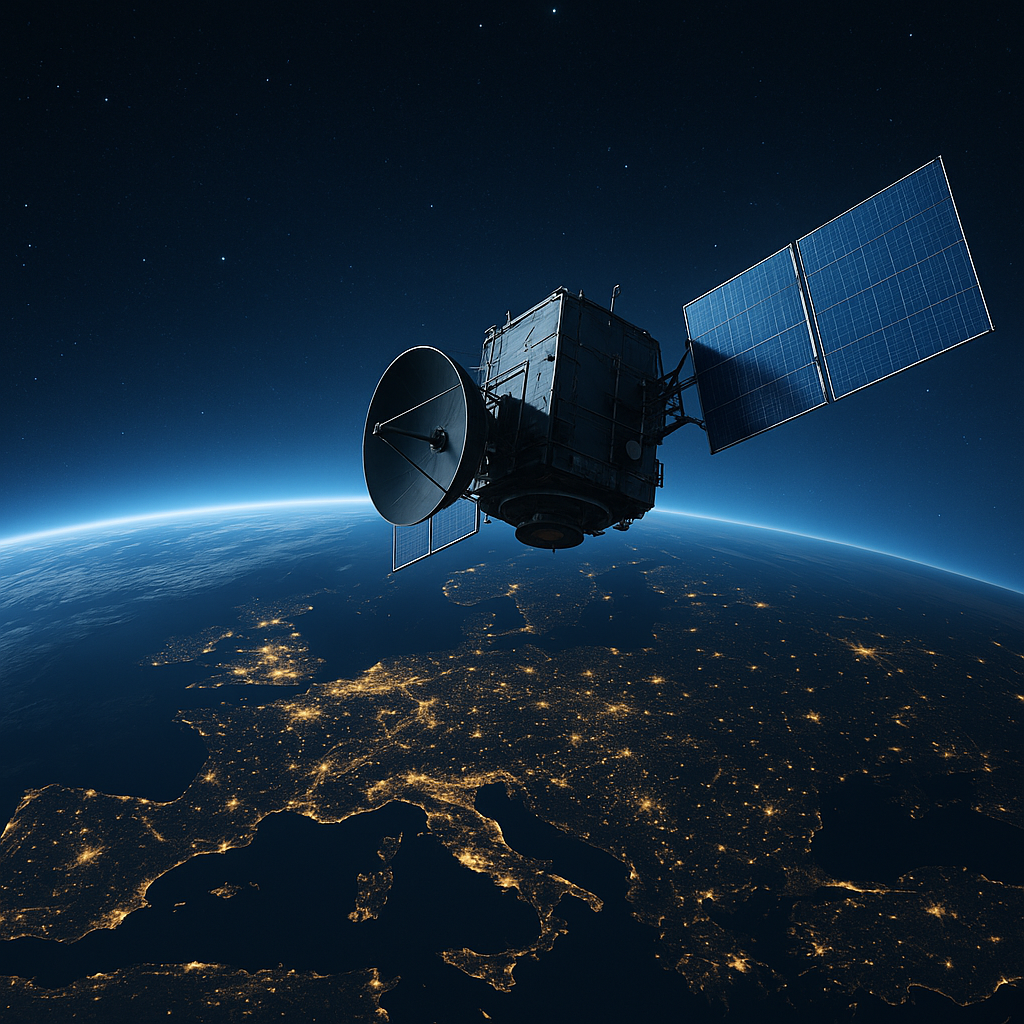A bold dual-use constellation would mark the agency’s first major step into military-grade space infrastructure.
June 2025 – The European Space Agency (ESA) is seeking €1 billion in funding to launch a powerful satellite constellation designed to provide Europe with strategic military-grade earth observation and intelligence capabilities. This would be ESA’s first major initiative built for dual-use—supporting both civil and defense operations.
ESA Director-General Josef Aschbacher confirmed that the constellation, commissioned by ESA’s member states and the European Union, will feature very high-resolution optical and radar sensors integrated with onboard artificial intelligence and computing systems. The data will be gathered and processed in near real time.
“This will be something quite significant,” said Aschbacher, speaking after a high-level summit of ESA’s 23 member states.
🔍 What Will the Satellite Network Include?
- Initial design: Between 15 and 30 next-generation Earth observation satellites
- Capabilities: Multispectral imaging, radar, high-resolution optical sensors, onboard AI for data processing
- Infrastructure: Satellites, launch systems, and terrestrial ground support
- Purpose: Serve both civil applications (e.g. disaster monitoring, environmental surveillance) and defense intelligence needs
Aschbacher stated the first phase would require roughly €1 billion, but noted that full deployment could be scaled up significantly if nations commit to long-term investment.
📈 Strategic Growth Potential
Space industry analysts believe the initial price tag is just the beginning. According to Maxime Puteaux, a principal at space consultancy Novaspace:
“A fully realized multi-orbit constellation for geospatial intelligence could easily cost between €4–6 billion over the next 10 to 15 years.”
He emphasized that this project has the potential to become one of Europe’s most important space investments in the coming decade—enhancing autonomy and security at a time of geopolitical uncertainty.
🛡️ Context: A Shift Toward European Space Autonomy
The announcement comes as Europe pushes for greater independence in defense and space technologies, especially with the uncertain trajectory of transatlantic relations under U.S. President Donald Trump.
On June 11, EU Defence and Space Commissioner Andrius Kubilius highlighted the need to upgrade Europe’s space infrastructure:
“We need advanced systems that can provide very high-resolution geointelligence every 30 minutes—not just once a day, as we do today.”
🚧 Budget Battle Ahead
ESA is preparing to request a 36% increase in its core budget—rising to €23 billion over the next three years—at its upcoming ministerial council in November.
This funding is critical as the agency adapts to potential disruptions in US-European cooperation, especially due to proposed massive budget cuts at NASA.
The White House budget plan seeks a 24% cut to NASA, slashing its science programs nearly in half. That would mark the smallest science budget at NASA since the 1970s. A number of ESA–NASA collaborative missions could be impacted:
- LISA – A joint mission to detect gravitational waves
- EnVision – A Venus orbiter carrying U.S. instruments
- NewAthena – Set to become the world’s largest X-ray space telescope
According to ESA’s Carole Mundell, while up to three major ESA science missions are vulnerable, the agency is exploring ways to restructure or reroute projects without NASA’s involvement.
🌍 A Critical Turning Point
As global defense priorities shift and space becomes a critical arena for strategic autonomy, ESA’s proposed satellite constellation represents a pivotal move toward building Europe’s own high-performance, AI-powered intelligence infrastructure in orbit.
With escalating demand for real-time, high-resolution surveillance, the project aligns closely with ESA’s long-term goals of space resilience, technological sovereignty, and international competitiveness.
